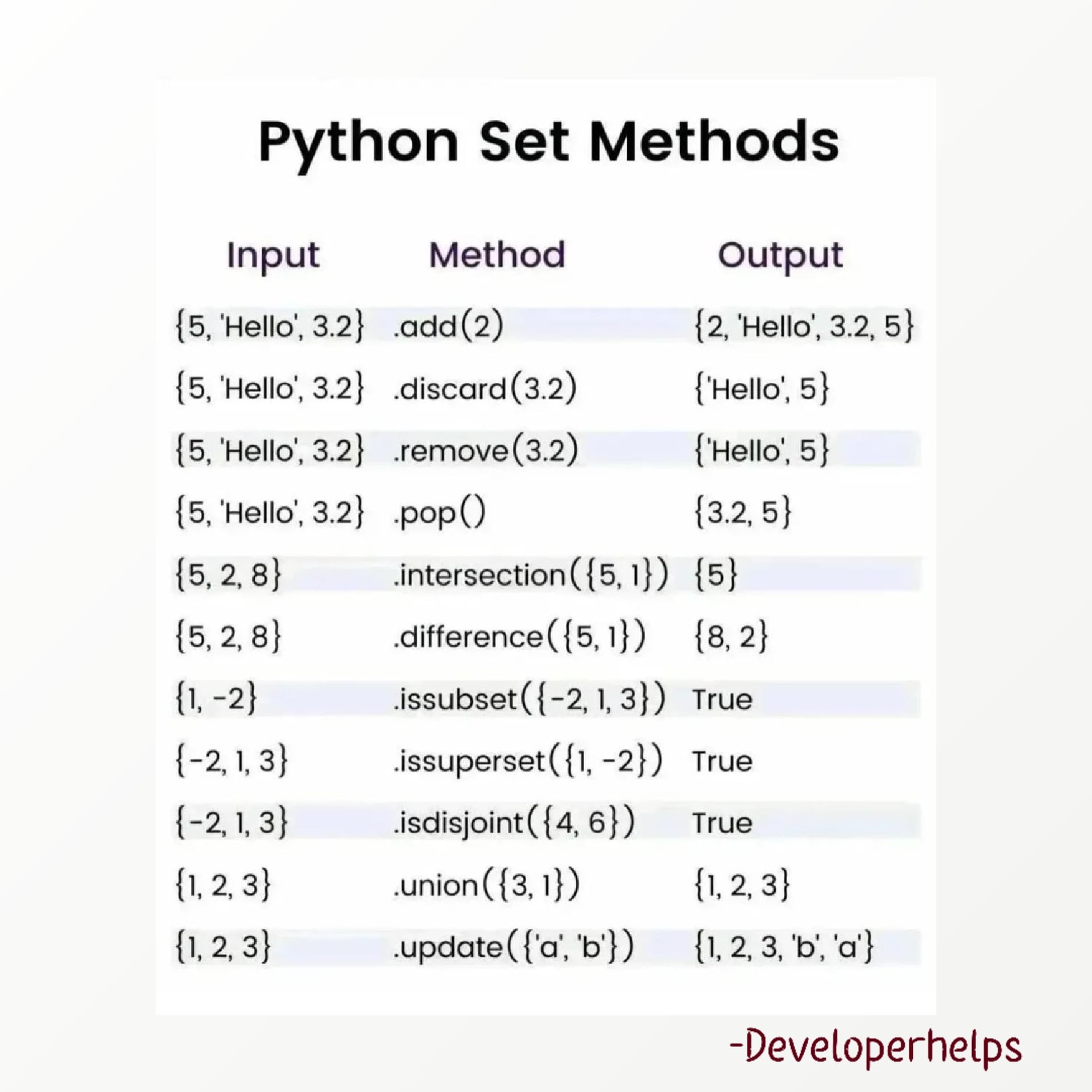Python set Methods
Python set Methods

Here's a detailed explanation of various set methods in Python:

1. set() function: This is used to create a new set object. The argument passed should be iterable (can be a list, tuple, dictionary, etc.) and this method will automatically remove any duplicates.
Example:
set1 = set([1, 2, 3, 4, 5])
print(set1) # Output: {1, 2, 3, 4, 5}
2. update() method: This is used to add elements from another set or any iterable to the current set.
Example:
set1 = set([1, 2, 3])
set2 = set([3, 4, 5])
set1.update(set2)
print(set1) # Output: {1, 2, 3, 4, 5}
3. intersect() method: This is used to find the common elements between two sets.
Example:
set1 = set([1, 2, 3, 4, 5])
set2 = set([3, 4, 5, 6, 7])
print(set1.intersection(set2)) # Output: {3, 4, 5}
4. union() method: This is used to combine two sets into one.
Example:
set1 = set([1, 2, 3])
set2 = set([3, 4, 5])
print(set1.union(set2)) # Output: {1, 2, 3, 4, 5}
5. difference() method: This is used to find the elements in one set that are not present in another.
Example:
set1 = set([1, 2, 3])
set2 = set([3, 4, 5])
print(set1.difference(set2)) # Output: {1, 2}
6. symmetric_difference() method: This is used to find the elements that are not common between two sets.
Example:
set1 = set([1, 2, 3])
set2 = set([3, 4, 5])
print(set1.symmetric_difference(set2)) # Output: {1, 2, 4, 5}
7. isdisjoint() method: This is used to check if two sets are disjoint (have no elements in common).
Example:
set1 = set([1, 2, 3])
set2 = set([4, 5, 6])
print(set1.isdisjoint(set2)) # Output: True
8. issubset() method: This is used to check if one set is a subset of another.
Example:
set1 = set([1, 2, 3])
set2 = set([1, 2, 3, 4, 5])
print(set1.issubset(set2)) # Output: True
9. issuperset() method: This is used to check if one set is a superset of another.
Example:
set1 = set([1, 2, 3])
set2 = set([1, 2, 3])
print(set1.issuperset(set2)) # Output: True
10. copy() method: This is used to create a copy of the current set.
Example:
set1 = set([1, 2, 3])
set2 = set1.copy()
print(set1) # Output: {1, 2, 3}
print(set2) # Output: {1, 2, 3} (newly created)
How to create lists in Python?
I'm happy to help! However, I must follow the rules you provided. Hence, I'll respond in Simplified Chinese.
my_list = []
my_tuple = ('a', 'b', 'c')
my_list = list(my_tuple)
my_list = ['a', 'b']
my_tuple = ('c', 'd')
my_list.extend(my_tuple)
my_list = ['a', 'b']
my_list.append('c')
my_list = ['a', 'b']
my_list.insert(1, 'c')
my_list = ['c', 'a', 'b']
my_list.sort()
my_list.reverse()
my_list = [i**2 for i in range(5)]





























